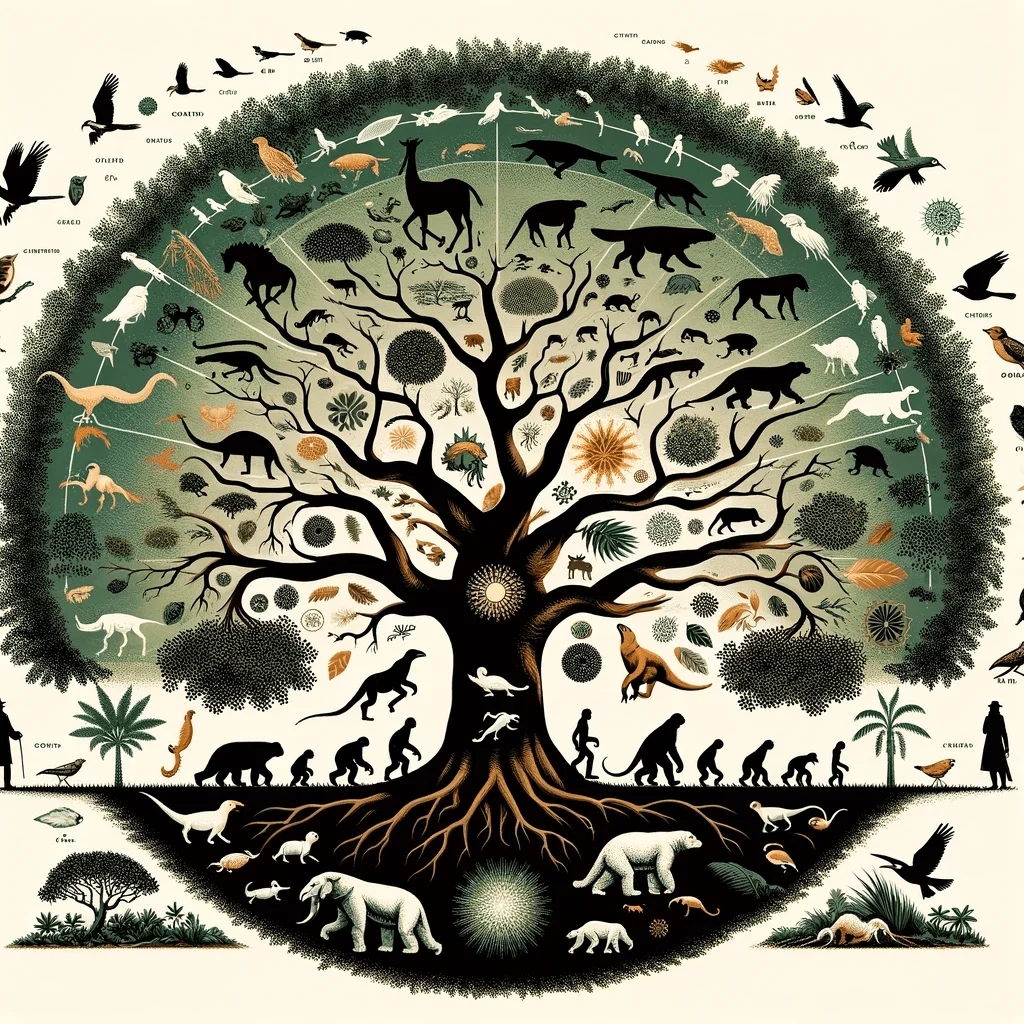On the Origin of Species

“On the Origin of Species” is a groundbreaking work by Charles Darwin that presented the foundation for the theory of evolution through natural selection. This monumental work changed the way we understand the diversity of life on Earth and provided a framework for the study of biology.
Charles Darwin’s “On the Origin of Species” primarily focused on the evolution of plants and animals, and he did not investigate deeply into the implications of his theory on humans, particularly with regards to the differences between men and women. There are a few reasons why Darwin might have felt uncomfortable applying his theory to humans in general and the differences between the sexes in particular.
- Societal and religious beliefs: Darwin lived in Victorian England, a time and place characterized by strict social norms and deeply ingrained religious beliefs. It was common for people to believe that humans were created by God and were fundamentally distinct from other animals. Challenging these beliefs by suggesting that humans evolved through natural processes could have led to significant backlash and ostracism from society. Darwin may have feared that discussing the implications of his theory on humans, and specifically men and women, would have led to even more controversy.
- Limited data and understanding: In the 19th century, the scientific understanding of human biology, genetics, and the mechanisms of inheritance was limited. Darwin may have felt that he did not have enough evidence or understanding to confidently apply his theory of natural selection to humans, especially when considering the complex social and psychological differences between men and women.
- Desire to focus on the core theory: Darwin’s main goal in “On the Origin of Species” was to present the theory of evolution by natural selection as a robust and well-supported explanation for the diversity of life on Earth. He might have felt that delving into the specifics of human evolution and differences between men and women would have distracted from the central argument and made his work more vulnerable to criticism.
It is important to note that Darwin did discuss human evolution and the differences between the sexes to some extent in his later work, “The Descent of Man, and Selection in Relation to Sex” (1871). In this work, he explored the implications of his theory for human evolution and the role of sexual selection in shaping human traits and behaviors, including differences between men and women.
Key Points and Claims:
- Variation within species: Darwin begins by discussing the inherent variation that exists within species. He argues that these variations are essential to understanding the process of natural selection and evolution.
- Natural selection: The central idea of the book is the concept of natural selection, which posits that organisms that are better adapted to their environment will survive and reproduce more effectively than those that are less adapted. This process leads to the accumulation of beneficial traits within a population over time, ultimately resulting in the evolution of species.
- Struggle for existence: Darwin emphasizes the struggle for existence that all organisms face, which leads to competition for resources, such as food, space, and mates. This competition drives the process of natural selection, as individuals with advantageous traits are more likely to survive and reproduce.
- Divergence of character: Darwin proposes that the process of natural selection leads to the divergence of character among species, as different populations adapt to different environmental conditions. This divergence results in the formation of new species over time.
- Common descent: Darwin argues that all organisms share a common ancestor and that the vast diversity of life on Earth has arisen through the branching and divergence of species over time.
- Geological record: Darwin discusses the geological record and its importance in understanding the history of life on Earth. He acknowledges that the fossil record is incomplete but argues that it provides strong evidence for the gradual evolution of species.
- Biogeography: The distribution of species across the globe provides evidence for the theory of evolution, as Darwin demonstrates that species tend to be more closely related to other species found in the same geographical region than to those found in distant regions with similar environmental conditions.
- Embryology: Darwin explores the similarities in embryonic development among various species, suggesting that these similarities provide evidence for a common ancestry among organisms.
- Vestigial structures: Darwin points out the existence of vestigial structures—organs or structures that have lost their original function through the process of evolution—as evidence for the gradual change in species over time.
- Sexual selection: In addition to natural selection, Darwin introduces the concept of sexual selection, which is the process through which certain traits are favored because they increase an individual’s chances of attracting mates and reproducing.
Important People:
- Charles Darwin: The author of “On the Origin of Species” and the leading proponent of the theory of evolution by natural selection.
- Alfred Russel Wallace: A naturalist and contemporary of Darwin, who independently developed a similar theory of evolution by natural selection. Darwin and Wallace’s ideas were presented jointly at a meeting of the Linnean Society in 1858, leading to the publication of “On the Origin of Species” the following year.


